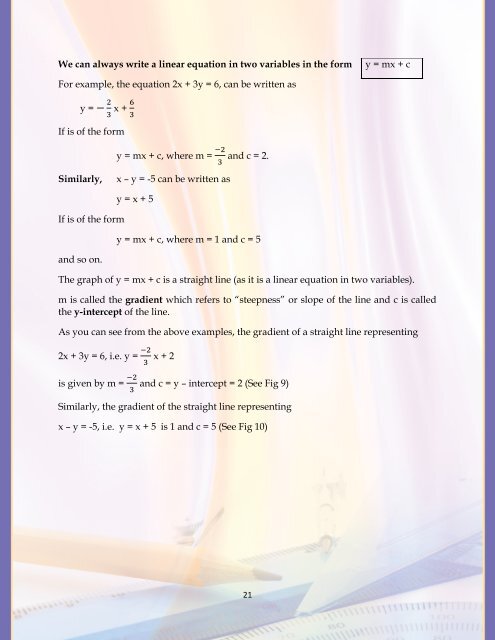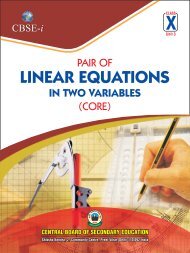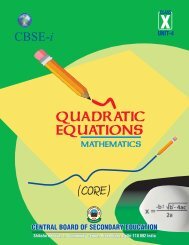CORE Coordinate Geometry and Transformations - New Indian ...
CORE Coordinate Geometry and Transformations - New Indian ...
CORE Coordinate Geometry and Transformations - New Indian ...
Create successful ePaper yourself
Turn your PDF publications into a flip-book with our unique Google optimized e-Paper software.
We can always write a linear equation in two variables in the form<br />
y = mx + c<br />
For example, the equation 2x + 3y = 6, can be written as<br />
y = x +<br />
If is of the form<br />
y = mx + c, where m = <strong>and</strong> c = 2.<br />
Similarly,<br />
x – y = -5 can be written as<br />
If is of the form<br />
<strong>and</strong> so on.<br />
y = x + 5<br />
y = mx + c, where m = 1 <strong>and</strong> c = 5<br />
The graph of y = mx + c is a straight line (as it is a linear equation in two variables).<br />
m is called the gradient which refers to “steepness” or slope of the line <strong>and</strong> c is called<br />
the y-intercept of the line.<br />
As you can see from the above examples, the gradient of a straight line representing<br />
2x + 3y = 6, i.e. y = x + 2<br />
is given by m = <strong>and</strong> c = y – intercept = 2 (See Fig 9)<br />
Similarly, the gradient of the straight line representing<br />
x – y = -5, i.e. y = x + 5 is 1 <strong>and</strong> c = 5 (See Fig 10)<br />
21

















